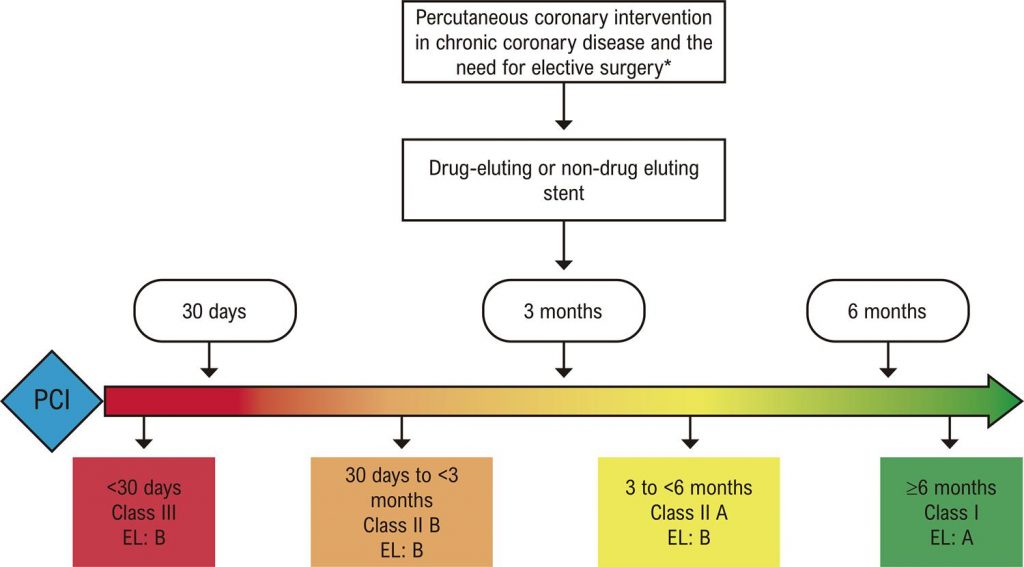Arq. Bras. Cardiol. 2022; 118(2): 536-547
Update of the Brazilian Society of Cardiology’s Perioperative Cardiovascular Assessment Guideline: Focus on Managing Patients with Percutaneous Coronary Intervention – 2022
1. Introduction
The care of patients undergoing percutaneous coronary intervention (PCI) and the eventual need for early non-cardiac surgery is one of the topics that generates the most debate in perioperative medicine, as it involves important questions about the management of antithrombotic therapy, in addition to the usual management issues of cardiac risk in coronary artery disease. On the one hand, the hemorrhagic risk inherent in surgery and potentiated by antiplatelet agents must be managed. On the other, the increased risk of stent thrombosis must also be considered, especially if dual antiplatelet therapy (DAPT) is shortened. Elements such as the urgency and extent of the surgical procedure, the patient’s clinical status, coronary angioplasty data (eg, the elapsed interval), an elective or emergency context, the primary results, and the stent type are essential for individualizing recommendations, considering both hemorrhagic risk ( ) and thrombotic risk ( ).
[…]
13,705

